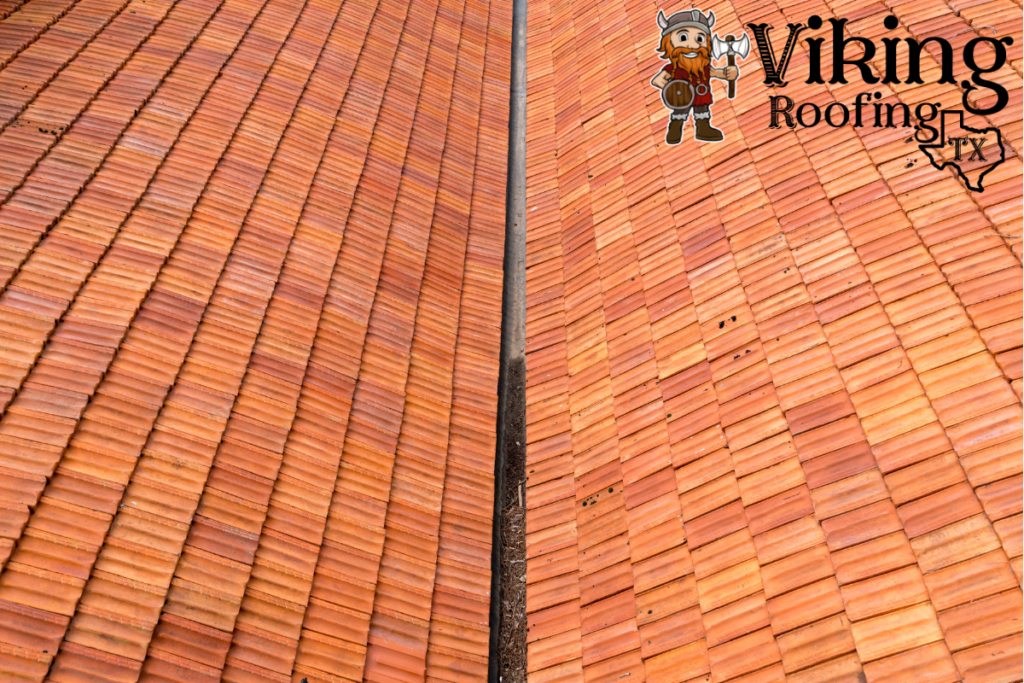
Joining two roofs with different pitches can be a challenge. Here are some tips to help you do it successfully.
Roofs have different pitches, which is the slope of their incline from front to back. This slant affects how much water will run off them when it rains. A roof with a steep pitch sheds more water than one with a low pitch because rain droplets slide down its surface farther before they can form into large pools of standing water on the ground below. Low-pitched roofs are helpful in reducing wind uplift, which is when winds lift up shingles and blow them away during storms, but that same characteristic makes them prone to collecting rainwater right at their base if there’s any kind of obstruction.
To join roofs that have different pitches, start by measuring the height of both roofs from the ground to their peaks at their midpoints. You can mark these heights with tape to make it easier to work with them later.
Next, lay a board across both surfaces so it touches them at their high points and hold one end against the ground at their low points. This will be your guide for laying shingles along both roofs.
Use roofing nails to attach the shingle courses, starting at one end of the roof and laying them across all surfaces that they’ll adjoin together. For best results, use ice-and-water underlayment on any surface that will have a high-pitched roof resting on it.
As each row of shingles reaches the board, measure the distance from the bottom edge of its upper course to the top edge of the board. You can use this measurement to make sure all your courses are even and straight.
Before you start nailing down your final course, lay a chalk line from the bottom edge of the course above it to where it will meet with the one below. This will give you a straight guide to follow for nailing that top shingle.
Once all your courses are aligned and nailed into place, lift up the board and measure the highest point on each roof. Transfer these heights to the low end of each roof and drive nails into that spot to create a straight, simple line where you’ll stand while you caulk and seal your new roof.
If one roof has a steeper pitch than the other
Use shingles cut in half along the shorter roof’s edge only. This won’t affect how water drains off the roof, but it will give you a straight line where boards can be placed for laying courses.
Use ice-and-water underlayment only along the longer roof’s edge. This will help shed water more quickly even though it won’t affect how water drains off the roof.
If both roofs have low pitches
Put ice-and-water underlayment across both roofs and nail shingles into it. This will help prevent water from pooling on either roof.
Use starter shingles along the edges of both roofs to create a straight line where courses can be laid out without measuring distances.
If one roof is lower than the other
Put ice-and-water underlayment across both roofs with the low end of the steeper roof’s edge flush against the high end of the lower roof.
Don’t use starter shingles along either edge; they will only cause your courses to be uneven.
Nail shingles into starter shingles at their midpoints to create even courses.
If you’re creating valleys (where two roofs come together in a V shape) on your new roof, place shingles across both sections where they’ll meet so the valley will drain properly. This is very important for preventing leaks.
Joining two roofs with different pitches can be a daunting task. Fortunately, there are quite a few ways to make the process simpler and more efficient. The key is choosing which approach will best suit your needs. If you’re looking for an affordable option that doesn’t require as much time or labor, we recommend using starter shingles along both edges of each roof instead of ice-and-water underlayment (even if one has a steeper pitch than the other). This way, you’ll have straight lines where courses can be laid out without measuring the distance from the board at every step in the process–a huge time saver!
For those who want to take their project up a notch and ensure it lasts longer than standard construction methods, we recommend using ice-and-water underlayment across the entire roof, with the low end of any steeper roofs’ edge flush against its high end. That way both surfaces will be protected from leaks and damage caused by heavy rainfall or snowfall. Using starter shingles along the two roofs’ edges won’t affect how water drains off them, but it will give you a straight line where courses can be laid out without measuring distance.
Joining Two Roofs with Different Pitches FAQ
How do you connect two roofs with different pitches?
Two roofs with different pitches can be connected in a number of ways. Connecting the roof is essential for water drainage and protecting your building from leaks. If you find yourself in this position, the following information will help you to solve your problem.
Can you mix roof pitches?
It’s probably best not to. Because the roofs are pitched differently, it may make it difficult to walk around on the roof and keep your footing because you could slip and fall off of one roof into the other.
How do you combine two roofs?
The easiest solution is to use a roof butt. The roof butts will be pitched in the direction of your lower roof and will support both roofs, providing a level surface. Although they won’t provide a seal between the two roofs, they will prevent leaks from one roof falling onto another at a lower pitch.
Can a roof have two different pitches?
Of course! Roofs with two different pitches are common, especially when a shed is added to a house. The roof butts can be used for both roofs because they’ll be pitched the same direction as the lower roof.
How do you join two roofs with different angles?
One way to connect two roofs is by using an angle iron. The angle iron will connect the two roofs and provide a seal between them. However, you need to make sure it’s large enough to withstand any snow loads that might occur on both roofs.
What is a roof butt?
A roof butt is a metal sheet with a simple incline that connects two sloping roofs that have different pitches.
